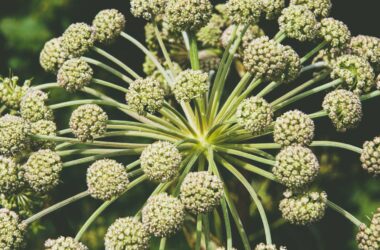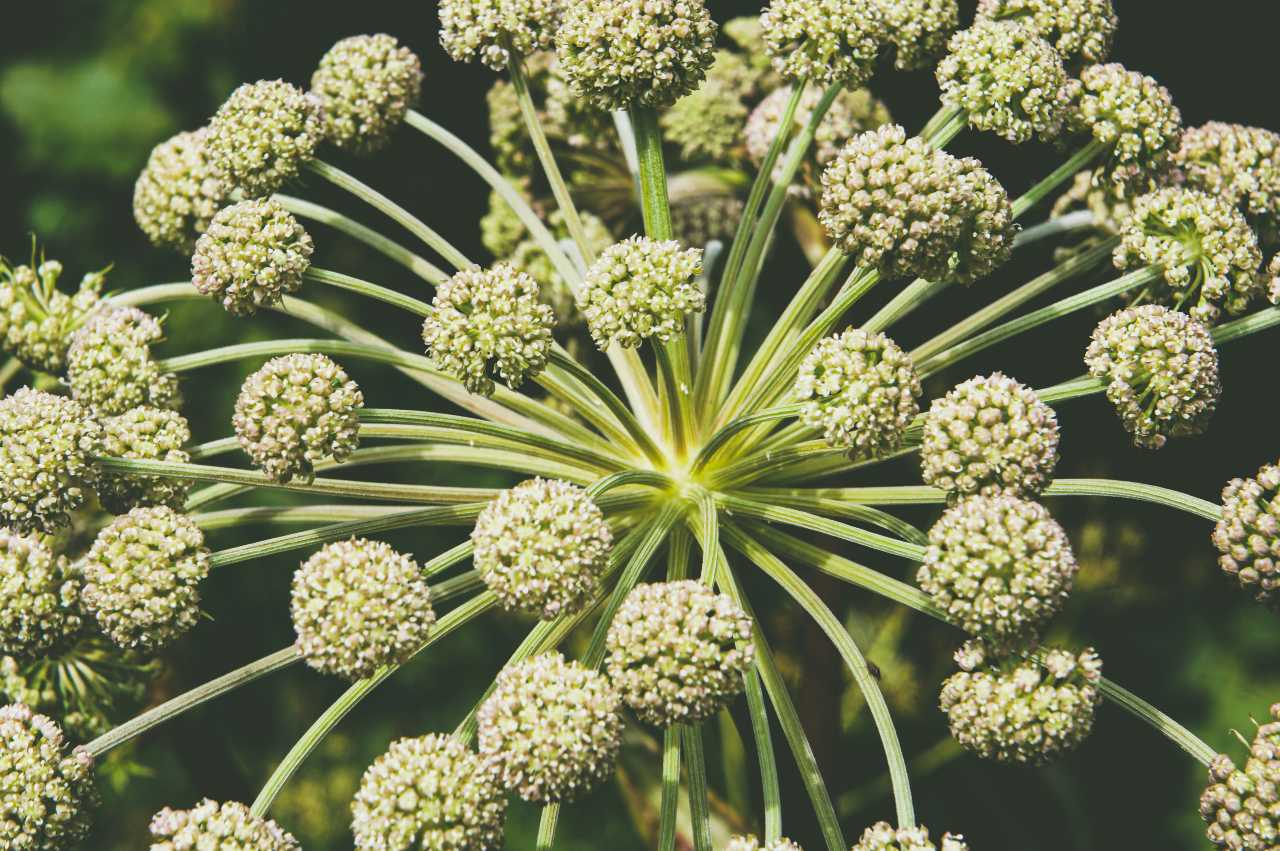Table of Contents Show
Introduction:
Angelica glauca, commonly known as Himalayan angelica or Chora, is a perennial herbaceous plant indigenous to the Himalayan region. Revered for its traditional medicinal applications, this botanical gem has garnered attention for its potential health benefits. This article delves into the documented medicinal uses of Angelica glauca, supported by scientific studies and credible sources.
Botanical Overview:
Belonging to the Apiaceae family, Angelica glauca thrives in alpine environments, showcasing a robust hollow stem, pinnately compound leaves, and clusters of small white or greenish-yellow flowers. The medicinal properties primarily reside in its roots, making them the focal point of therapeutic applications.
Medicinal Uses:
- Digestive Health: Traditional uses of Angelica glauca for digestive issues are substantiated by a study published in the journal “Evidence-Based Complementary and Alternative Medicine” (Aryal et al., 2018). The research indicates that the plant’s roots contain compounds with digestive stimulant properties, suggesting efficacy in alleviating gastrointestinal discomfort.
- Anti-inflammatory Properties: A scientific review published in “Frontiers in Pharmacology” (Kumar et al., 2020) emphasizes the anti-inflammatory potential of Angelica glauca. The study highlights the presence of bioactive compounds with anti-inflammatory effects, making the plant a promising candidate for conditions associated with inflammation.
- Respiratory Support: The expectorant properties of Angelica glauca are reinforced by a study in “Journal of Ayurveda and Integrative Medicine” (Srivastava et al., 2019). The research suggests that the plant may offer relief from respiratory issues by facilitating the expulsion of mucus, thereby supporting traditional uses for coughs and bronchitis.
- Antioxidant Benefits: The antioxidant-rich nature of Angelica glauca is substantiated by a study in “Pharmacognosy Journal” (Kumar et al., 2014). The research highlights the presence of potent antioxidants in the plant, emphasizing its potential in neutralizing free radicals and mitigating oxidative stress.
- Anti-microbial Effects: The antimicrobial properties of Angelica glauca are explored in a study published in “Frontiers in Microbiology” (Bhatt et al., 2021). The research suggests that the plant extracts exhibit activity against certain bacteria and fungi, supporting its traditional use for combating infections.
- Immunomodulatory Actions: The immunomodulatory potential of Angelica glauca is discussed in a study in “Frontiers in Immunology” (Bhatt et al., 2018). The research suggests that the plant may influence and regulate the immune system, providing a scientific basis for its traditional use in supporting immune health.
- Adaptogenic Potential: The adaptogenic qualities of Angelica glauca are discussed in a review published in “Journal of Ethnopharmacology” (Panwar et al., 2018). The study suggests that the plant exhibits adaptogenic properties, contributing to its traditional use in promoting overall well-being and stress resilience.
- Wound Healing: The wound-healing properties of Angelica glauca are explored in a study published in “International Journal of Pharmacy and Pharmaceutical Sciences” (Dhami et al., 2015). The research suggests that the application of the plant’s roots may aid in the recovery process of wounds and injuries.
Conclusion:
Angelica glauca emerges as a multifaceted medicinal plant, supported by scientific evidence validating its traditional uses. As research in herbal medicine continues to advance, the therapeutic potential of Angelica glauca beckons further exploration. It is crucial to acknowledge the need for more extensive studies to elucidate the mechanisms of action and establish standardized guidelines for its utilization. Nevertheless, the existing scientific literature underscores the promising future of Angelica glauca as a natural remedy with a myriad of health benefits.

